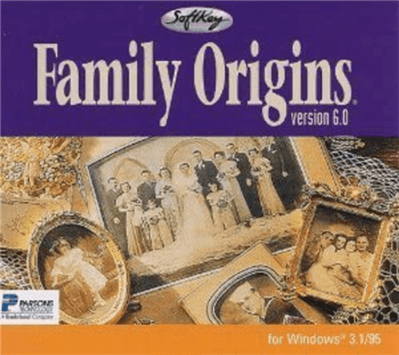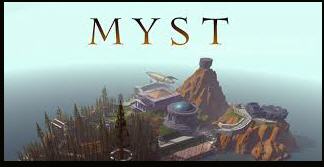The RootsMagic family tree software is owned by RootsMagic Inc. The software company was founded in 1986 under a different name by Bruce Buzbee, who remains President. Buzbee created a prior family history product that was licensed through several larger companies. He released RootsMagic independently in 2002.
This article looks at the early events that led to the creation of this very popular genealogy program. We also explore the fascinating connections with its largest rival.
Founder’s Early Interest In Genealogy
Bruce Buzbee had an early exposure to genealogy as his mother was a family history librarian.
Buzbee also attended Brigham Young University (BYU), which is sponsored by the LDS Church. Utah, and BYU in particular, has produced several influencers who introduced technology to family history research.
It’s not just the giant online archive of FamilySearch.org (owned by LDS). The early owners of Ancestry.com also attended BYU, where they were first inspired to create online genealogy archives.
However, Buzbee left college for Silicon Valley where he worked as an engineer for several years. The young man wanted to develop his own software, and he spent nights putting together a new application.
Before RootsMagic: Spreadsheets(!)
Buzbee’s first commercial software projects were outside the field of genealogy. However, they revolved around organization and classification: he created spreadsheet applications.
Buzbee was still working the day job, but he registered a company name of “The FormalWare Co” in 1986. This was wordplay because he was releasing his first program as ShareWare.
As sales revenue began to grow, Buzbee quit the day job and moved with his wife back to Utah. He hit a snag with the company name. Utah officials said that “FormalWare” sounded too much like tuxedo hire as opposed to software. So, he switched names to “FormalSoft”.
1989 – Enter Parsons Technology
This is an important part of the story. Like other software companies, Buzbee would drum up business by attending conventions. COMDEX was one of the giant trade shows.
Bob Parsons of Parsons Technology connected with Buzbee after the 1989 convention, as he wanted to license the spreadsheet software.
Parsons Technology will later play a massive part in the development and demise of many genealogy applications. But the first connection with Buzbee was through this different application area.
Various spreadsheet programs
Depending on your profession and your longevity(!), you may have come across one or more of Buzbee’s spreadsheet applications.
The first was called QubeCalc, and the next was InstaCalc.
Buzbee’s company FormalSoft then released ProQubue, which Parson Technology licensed and distributed as ProCalc 3D.
Getting Into Genealogy Software
Family Tree Maker hit the genealogy market in 1989 to great acclaim. I’ve written a separate article about its interesting and checkered history of Family Tree Maker.
Parsons Technology wanted to compete directly with FTM, and hinted to Buzbee that they’d be interested if he developed a clone.
But Buzbee had other ideas.
When he had first dabbled in programming in the early 80s, he started to code a genealogy application. Then he accidentally wiped out his work. That was so easy back then (I sheepishly admit).
Now with commercial spreadsheet applications under his belt, Buzbee jumped back into genealogy.
His first genealogy application was called AncestraLink. Buzbee released it in 1991 through his own company, FormalSoft.
Never heard of AncestraLink? Enter Parsons Technology.
The company had its own team trying to develop a similar offering to FTM. But when they spotted what Buzbee had achieved, they asked to license his new software.
Before RootsMagic: Family Origins
In 1992, Buzbee signed a licensing agreement with Parsons Technology for his genealogy program.
Parsons insisted on a name change to Family Origins.
Here’s a later version that is currently listed on Amazon. You can still get some used copies for Windows 3.1/95. That could be useful for someone who discovers a parent’s floppy disks with their family research.

If you’re wondering about the breakdown of work between Parsons Technology and Buzbee’s FormalSoft, the former company looked after all the sales, marketing, and customer support. That is a software developer’s dream! It allowed Buzbee to focus on coding.
FormalSoft continued to innovate with genealogy features, while the licensing of the product went through a series of changes.
A Well-Trodden Journey
When I saw a list of the different companies that owned the license for Family Origins, my first thought was…haven’t I written this story before? Because that list looks awfully familiar.
But the other article I wrote was about the origins and successive ownership of Family Tree Maker. From the moment Parsons Technology was involved, the winding journey looks very similar.
The key difference is that Ken Hess sold Family Tree Maker outright to a company that later acquired Parsons Technology. In contrast, Bruce Buzbee licensed his software to Parsons. He retained ownership, which would greatly impact his own future and the inception of RootsMagic.
The Rise And Slow Demise Of Family Origins
Parsons Technology was acquired by Intuit in 1994.
Intuit sold financial applications like Quicken and TurboTax, which were very successful in the United States. This development didn’t have much impact on Family Origins, and development and releases continued.
In 1997, Intuit sold Parsons Technology to Broderbund. The software company was best known amongst a wider public for computer games like Prince Of Persia and Myst.

But Broderbund was also known within genealogy circles as being the owner of Family Tree Maker, which they purchased in 1995.
Parsons Technology had licensed Family Origins to compete with Family Tree Maker. This would prove to be the beginning of the end for the younger application.
But Broderbund wasn’t long enough in the picture to have much influence either way. It was purchased by The Learning Company in 1998. And their influence was negligible too. They were purchased a year later by Mattel.
Mattel? Yes, the company perhaps most famous for this trio of lovely ladies:

So, what would Mattel do with its freshly acquired suite of competing family history programs? They hived off a separate product line for genealogy, which was branded as Genealogy.com. This brand name had several partners, including A&E Television Networks.
Genealogy.com starts throwing genealogy programs overboard
At this point, Genealogy.com had a hodgepodge of genealogy software through acquisitions. Alongside Family Tree Maker and Family Origins, there were Family Tree Creator and Ultimate Family Tree just to name a few.
It’s fair to say that they considered FTM to be the golden child (strikethrough) goose. Ultimate Family Tree was thrown overboard in 1993, and other programs slowly disappeared.
Saying goodbye to Family Origins
I mentioned that Buzbee retained the copyright to Family Origins. It couldn’t just be shut down, but it would be slowly sidelined through neglect.
Buzbee made inquiries about regaining the license to his software, but the holders weren’t interested in coughing it up.
Crucially, Buzbee realized that his contract didn’t have a non-compete clause. That’s the key to what happened next i.e. the advent of RootsMagic.
But the software you know didn’t start as RootsMagic. It had a somewhat different name.
Enter RootsMate…errrmm..no…wait
Buzbee knew that any new genealogy product that he created would have to be different to Family Origins – to avoid legal trouble.
So he put his head down and worked on his new offering. He pre-launched the software at a genealogy conference, and he named the application RootsMate. No, that’s not a typo.
Some antipodean friends pointed out to Buzbee that this name could be construed as inappropriate slang. So he made a quick change to the marketing software before the official release.
Enter RootsMagic
RootsMagic was released in 2002 under Buzbee’s company, FormalSoft.
A year later, the company’s name changed to match its flagship product. RootsMagic Inc. was born.
And that brings us to the end of the beginning of RootsMagic.
But there are still a few loose ends to tie up. What happened to Family Origins? To Family Tree Maker? And even to Genealogy.com? Read on for some brief details.
If you’ve read a few articles on this site, you won’t be surprised to see Ancestry.com looming large on the horizon.
Who Owns RootsMagic – The Epilogue
Genealogy.com discontinued Family Origins in 2003. At this point, their flagship software was Family Tree Maker.
But in 2003, Genealogy.com was purchased by MyFamily.com.
Don’t let your eyes glaze over by all these “family” brand names. MyFamily.com was one of several brands within the same corporate group. Other brands included one of the biggest kids on the block: Ancestry.com.
Eventually, the corporate group collapsed all their brands under the name of Ancestry.com. This is how Family Tree Maker became owned by Ancestry.
Who Owns RootsMagic – From The Horse’s Mouth
My main source is a series of posts on the RootsMagic website written by Bruce Buzbee himself. It’s a hugely entertaining read across twelve articles. You can get links to each part here. If I’ve misunderstood any aspect, the fault is mine.
As I’d previously written in detail about both the origins of both Family Tree Maker and of Ancestry.com, I was fascinated to see how the origins and early history of RootsMagic were intertwined.
Who Owns RootsMagic Now?
I stopped the story of RootsMagic just as it was getting going. There’s been plenty of acquisitions in the genealogy world since then. How did RootsMagic fare?
The software is still owned by RootsMagic Inc, and Bruce Buzbee is the President of the company he founded.